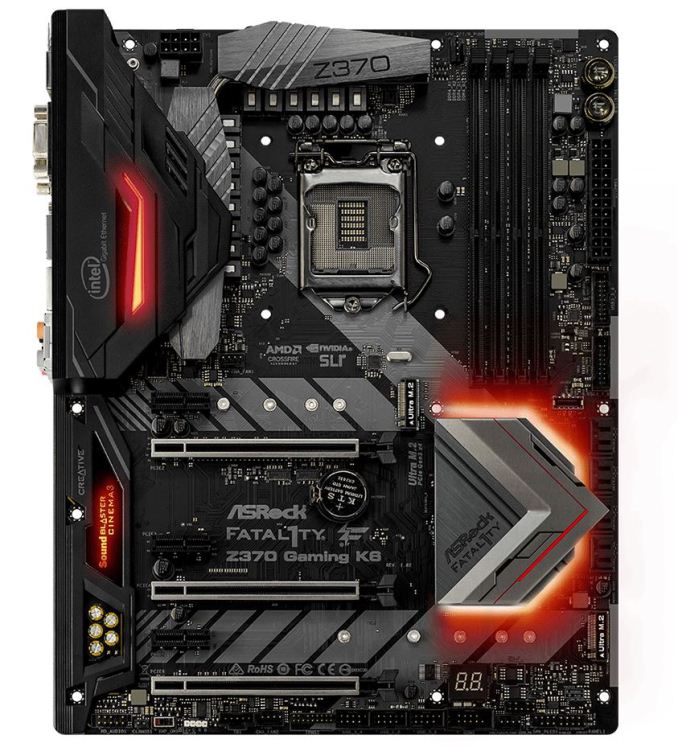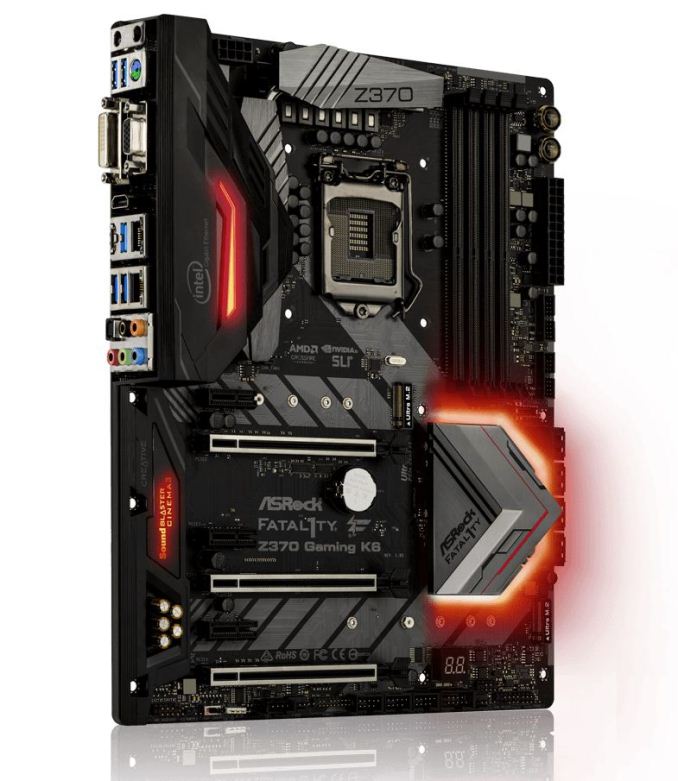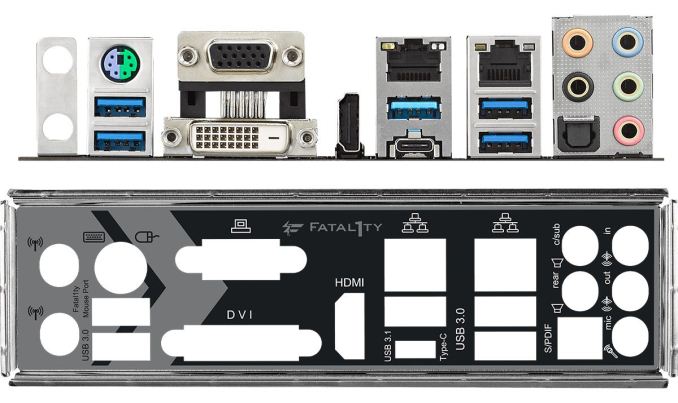Analyzing Z370 for Intel's 8th Generation Coffee Lake: A Quick Look at 50+ Motherboards
by Ian Cutress, Anton Shilov, Joe Shields & Gavin Bonshor on October 20, 2017 2:00 PM ESTASRock Z370 Gaming K6
The Gaming K6 is the second board in the Gaming lineup. The board is styled similarly but has fewer features when comparing it to the flagship, such as removing some of the premium features like 10-gigabit Ethernet.
The overall appearance of the board is nearly the same as its big brother. The differences worth mentioning is the power and reset buttons have moved from next to the debug LED at the bottom right to the top right-hand corner. The debug LED remains in the same location as well as the other RGB LEDs in the shrouds and chipset heatsink. Additional strips can be added using the RGB header located on the bottom of the board.
Memory capacity and supported speeds are the same as the high-end model, at 64GB and DDR4-4333 respectively. There are three reinforced full-length PCIe slots, capable of running at x16 single, x8/x8 dual, and x8/x4/x4 when all are populated. To accompany this are three open-ended PCIe x1 slots, supporting larger cards but only at x1 bandwidth. This lane configuration allows support for 2-way SLI and 3-Way Crossfire.
The Gaming K6 breaks the regular Z370 mold and gives users eight SATA ports, six from the chipset and two additional ports from an ASM1061 controller. Two M.2 slots are on the K6 with the top one supporting 80mm drives and the other one nearer the chipset supporting up to 110mm. The first M.2 slot shares lanes with SATA 0/1 ports while the second shared with SATA 4/5 ports when SATA drives are connected.
Audio is handled by the Realtek ALC1220 codec and offers the same features as the flagship Pro Gaming i7 using Nichicon Gold series audio caps and the same NE5532 headset amplifier. Sound shaping is handled by the Creative Sound Blaster Cinema 3 software. Networking responsibilities are handed off to two Intel NICs, an I219-V and I211-AT. Though wireless networking isn’t included, there is an M.2 E-Key slot in the back panel if needed.
USB connectivity is similar with the K6 offering a front panel USB 3.1 (10 Gbps) Type-C port as well as Type-C and Type-A ports on the back panel using an ASMedia chipset. Four USB 3.1 (5 Gbps) ports are on the rear panel, with two additional headers on board. Six USB 2.0 ports via three headers are also supported. The rear panel IO also has a combination PS/2 port, and uses D-Sub, DVI-D and HDMI video outputs.













83 Comments
View All Comments
tommythorn - Monday, October 23, 2017 - link
While that feature page is great, the thunderbolt part is slightly misleading as a few of them supports it via an add-in-card. The page only lists the one that has it built-in. (The lackluster support for TB3 as well as 10 GbE is disappointing).OFelix - Saturday, October 21, 2017 - link
ThanksStochastic - Friday, October 20, 2017 - link
Would you consider putting out some simple Wirecutter-style recommendations? A lot of people (including myself) would like someone else who is better informed to simplify the decision-making process.Ian Cutress - Friday, October 20, 2017 - link
When we get our Z370 reviews underway, we'll start doing some buyers guidesStochastic - Friday, October 20, 2017 - link
Great, thanks!IGTrading - Sunday, October 22, 2017 - link
When do we get a 50+ AMD motherboard article guys ? :)abrowne1993 - Friday, October 20, 2017 - link
Okay but which one looks the coolest?dave_the_nerd - Friday, October 20, 2017 - link
"Whoever thought this was a good idea at Intel needs to be fired."Well... gee... why don't you tell us how you really feel?
DigitalFreak - Friday, October 20, 2017 - link
This whole notch thing makes me wonder if the 8xxx series was originally supposed to work in existing motherboards, but Intel ran into issues at the last minute.KaarlisK - Saturday, October 21, 2017 - link
Honestly, I cannot see the issue. The pins were changed so that nothing bad will happen if you put the wrong CPU in the wrong motherboard.As for the notches, I for one am happy that they were not changed. This means they can reuse the physical design, which lowers validation costs, which makes the CPUs cheaper.